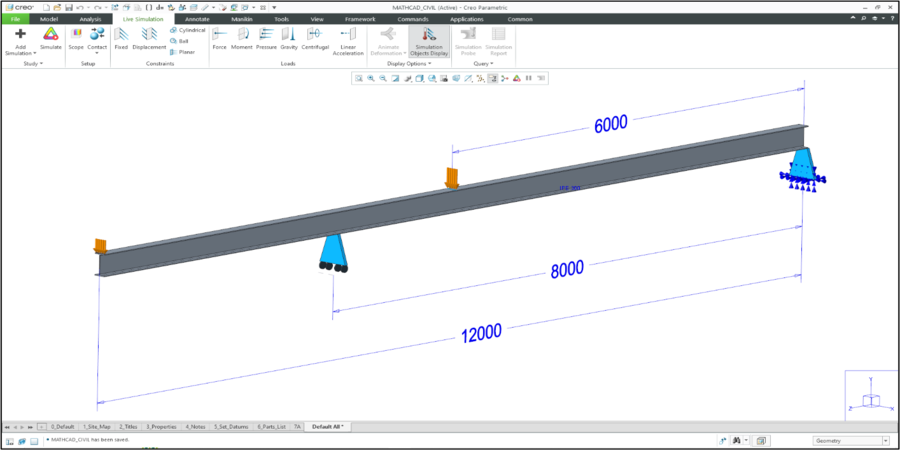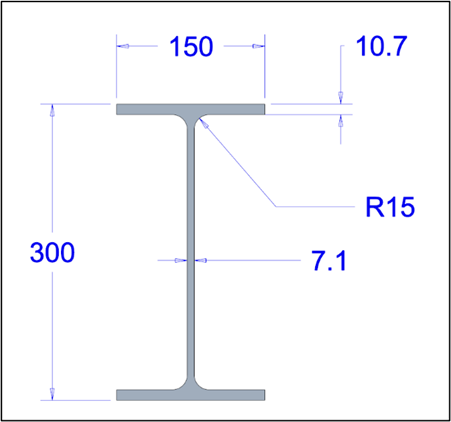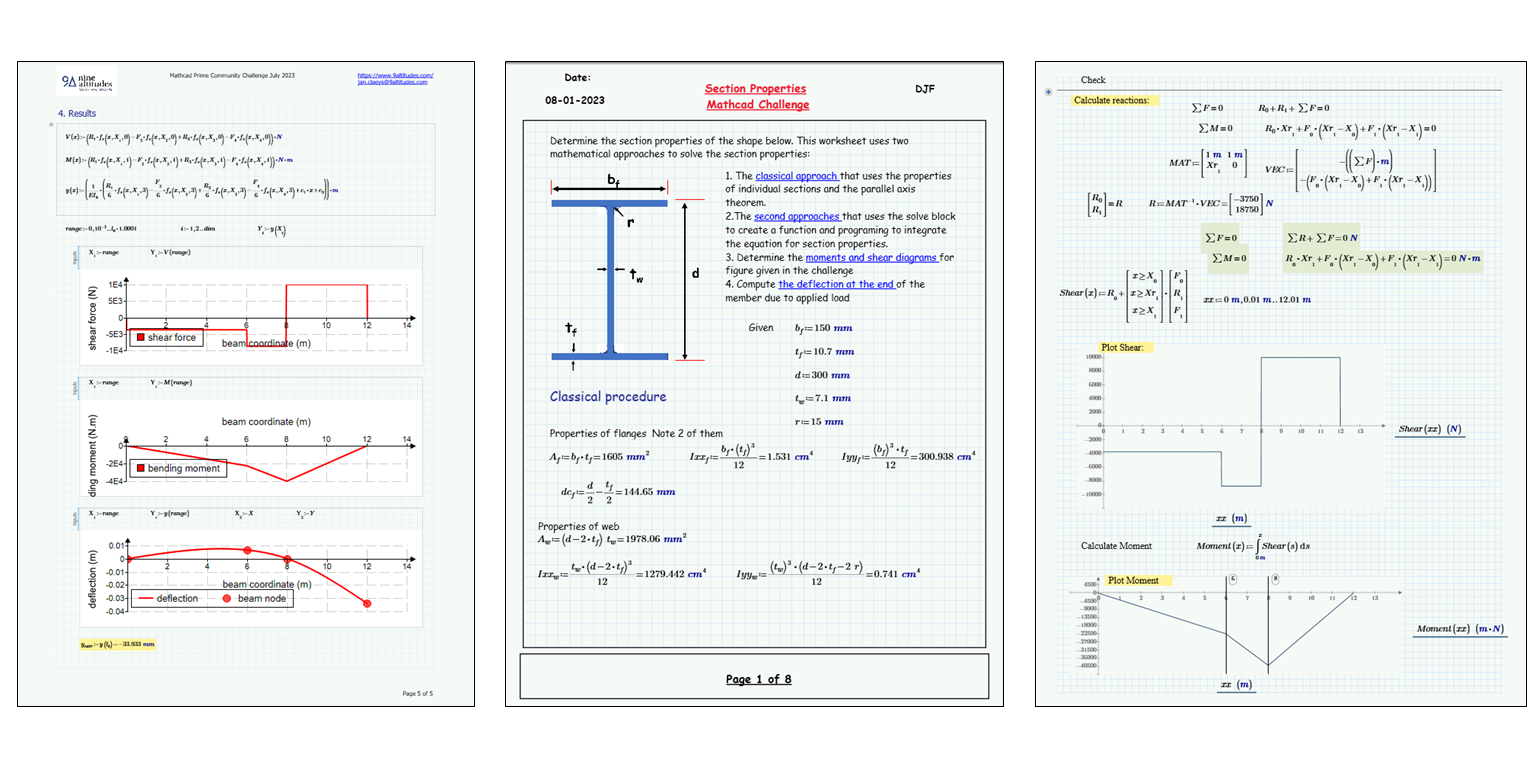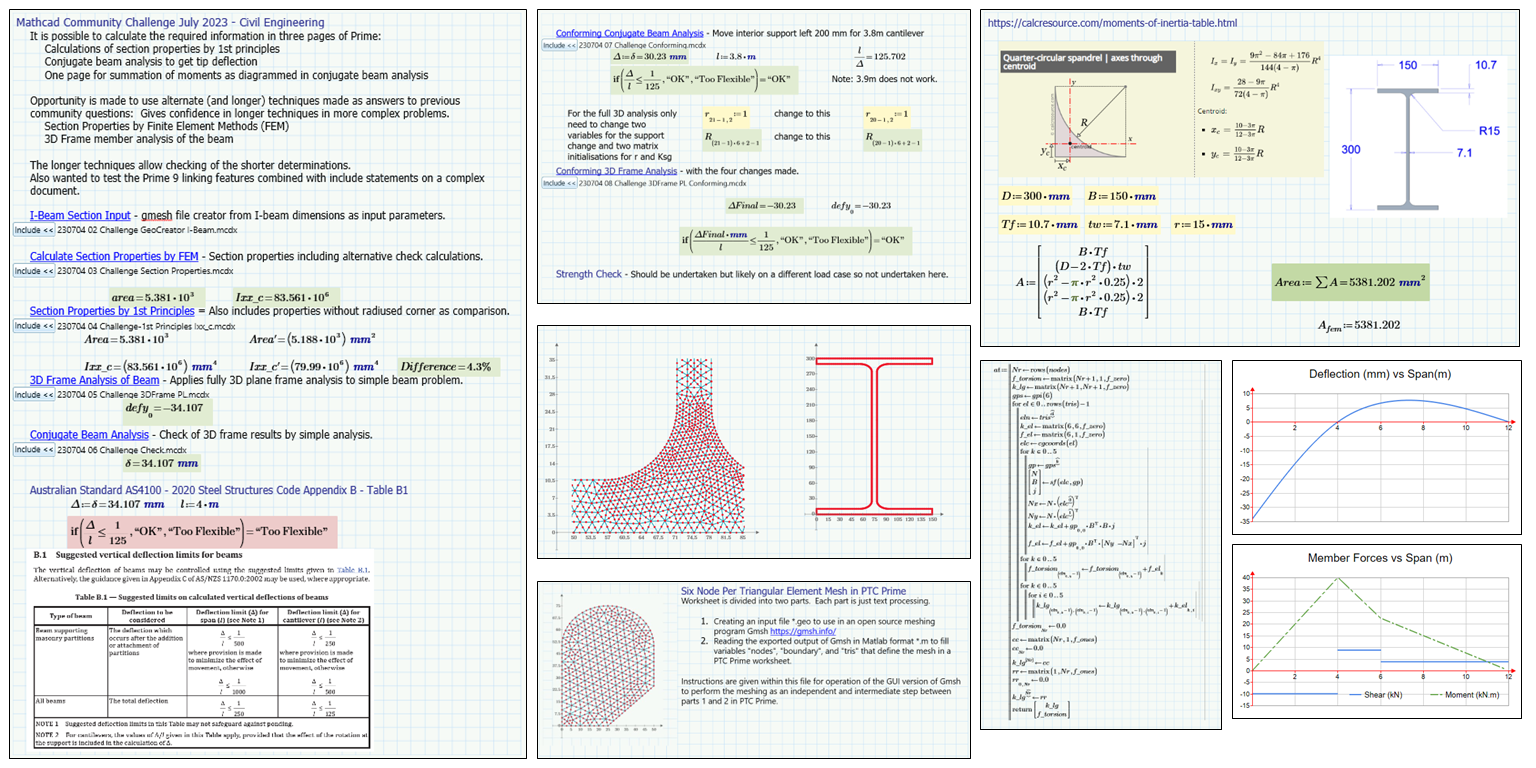
In July 2023, we had our first civil engineering based Mathcad Community Challenge:

Images created with Creo Parametric, Advanced Framework Extension, and Creo Simulation Live.
Scenario: You have a standard 300mm steel I-beam with a length of 12 meters. It is simply supported at one end and at 8 meters from that end. There is a load of 4500 Newtons in the middle and 2500 Newtons at the unsupported end.

Frequent contributor Fred Kohlhepp submitted the first worksheet, and later submitted a second worksheet that took the I-beam fillets into account. He calculated the cross-sectional area and moment of inertia via integration, requiring a tightening of Mathcad’s convergence tolerance. He used vectors and matrices to calculate the reactions at the supports and the shear as a function of position along the beam. He plotted the bending moment by integrating the shear function. Then he used the slopes of the moment lines to calculate and plot the deflection.
Visually, I like Fred’s use of highlighting to draw attention to the important parts.
Terry Hendicott’s approach was quite ambitious, consisting of eight (!) worksheets linked together using the Include functionality. He acknowledges that the problem can be solved in a much shorter format, but uses this longer technique to help users gain confidence working on more complex problems in Mathcad.

His approach is essentially a Finite Element Analysis (FEA) method using an open-source mesh generator called Gmsh. The solutions are quite involved with several complex programs. Anyone interested in performing advanced structural analysis using Mathcad should check it out.
As usual, Jan Claeys created a beautiful worksheet that can be used as a teaching tool. He made great use of Mathcad’s documentation functionality, including text, images, headers, footers, external and in-worksheet hyperlinks, areas, and even programs. (I’ve never seen programs used for documentation. Interesting.) Some unique aspects of his worksheet include Tables and the SIUnitsOf function. The results were presented beautifully with Chart Components.
(By the way, you can see more of Jan in this Mathcad video.)
Robert B submitted a worksheet with original images for the beam length and section as reference for his calculations. He calculated the cross section and moment of inertia by breaking up the beam into three sections. He calculated a function for the load; integrated that to get the shear; integrated the shear to get the moment; integrated the moment to get the slope; and integrated the slope to get the deflection. He then used a Solve Block (my personal favorite Mathcad functionality) to solve for the reactions.
Robert plotted the various quantities using both XY Plots and Chart Components. I recommend you view his worksheet to decide for yourself which tool communicates the results better.
Previous contributor Dennis Fallon, the former dean of the School of Engineering at The Citadel, has returned for this month’s challenge with an exemplary worksheet that could be used in a college classroom. It has great use of images with transparent backgrounds, fonts, color, borders, and internal hyperlinks. Professor Fallon used two different methods for calculating the properties of the beam including the fillets, a classical approach and a second using Solve Blocks and programs. The Chart Components for shear and moment take full advantage of formatting options, especially color.
Dr. Pat Heffernan provided great help by vetting this problem during the creation phase. His worksheet is posted in the challenge replies. You can catch his presentation at the Mathcad for Civil Engineers webinar here. He also has a YouTube channel that covers many Mathcad topics.
As a mechanical engineer and Creo Parametric user, I’m used to thinking of Mathcad as a tool for product development and mechanical engineering related work. We have had previous challenges that have shown Mathcad’s utility for electrical engineering, and now we can see it is just as well suited for structural analysis and civil engineering problems. And, of course, Mathcad can be used for more than just engineering calculations, including statistics, image processing, and finance.
If you have not looked at the submissions for yourself, please do so. I guarantee you will learn something.
September’s challenge will be something new, so I recommend you keep an eye on the PTC Community Mathcad page and register for the fourth-annual Mathcad Virtual Conference, coming on August 30, 2023.
Get the latest Mathcad Community Challenge, plus other Mathcad tips, tricks, and more!